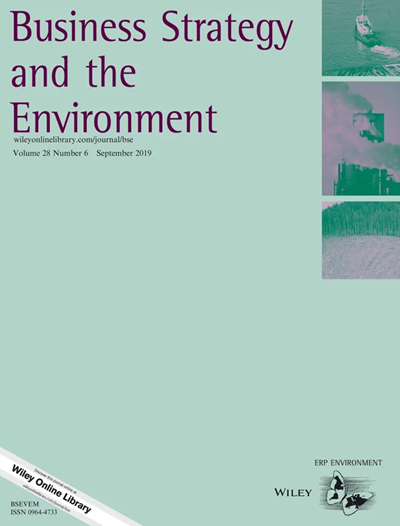Transitioning Towards Circular Economy Practices: The Role of Organizational Capabilities and Environmental Dynamism—Evidence From Indonesia
IF 13.3
1区 管理学
Q1 BUSINESS
引用次数: 0
Abstract
Circular economy practices are increasingly recognized as strategic approaches to enhance competitiveness and sustainability. However, the transition to circular business models, particularly concerning internal capabilities and environmental dynamics in small‐ and medium‐sized enterprises (SMEs), has not been sufficiently explored. This study examines the impact of organizational agility and environmental dynamism on circular economy practices among Indonesian SMEs. Data from 207 companies (828 respondents) were analyzed using structural equation modeling. Results show that both organizational agility and environmental dynamism significantly drive strategic changes towards circular economy practices. Organizational agility positively influences circular product innovation and production processes, while environmental dynamism has a notably positive impact on recycling initiatives. The adoption of circular business models mediates organizational agility and environmental dynamism towards circular economy practices (circular product innovation, circular production practices, and recycling practices). This research enhances our understanding of how organizational adaptability and environmental factors promote circular business models in SMEs. This study integrates dynamic capability and institutional theory through a comprehensive model to enhance the circular economy literature, especially in the SME sector. In addition, the research findings offer valuable insights for policymakers and business leaders implementing circular economy principles in the SME sector, contributing to the achievement of Sustainable Development Goals (Goal 8, decent work and economic growth; Goal 9, industry, innovation, and infrastructure; Goal 12, responsible consumption and production; Goal 13, climate action; Goal 17, partnership for the goals) through improved resource management and sustainable practices.向循环经济实践过渡:组织能力和环境动态的作用——来自印度尼西亚的证据
循环经济实践日益被认为是提高竞争力和可持续性的战略途径。然而,向循环商业模式的过渡,特别是关于中小型企业(SMEs)的内部能力和环境动态,尚未得到充分的探索。本研究考察了组织敏捷性和环境动态性对印尼中小企业循环经济实践的影响。使用结构方程模型分析了207家公司(828名受访者)的数据。结果表明,组织敏捷性和环境动态性都显著地推动了向循环经济实践的战略变革。组织敏捷性对循环产品创新和生产过程有积极影响,而环境动态性对回收计划有显著的积极影响。采用循环商业模式可以促进组织的敏捷性和环境的动态性,促进循环经济实践(循环产品创新、循环生产实践和循环利用实践)。本研究增进了我们对组织适应性和环境因素如何促进中小企业循环商业模式的理解。本研究将动态能力理论与制度理论相结合,通过一个综合模型来提升循环经济文献,特别是在中小企业领域。此外,研究结果为决策者和商界领袖在中小企业部门实施循环经济原则提供了宝贵见解,有助于通过改进资源管理和可持续实践实现可持续发展目标(目标8,体面工作和经济增长;目标9,工业、创新和基础设施;目标12,负责任的消费和生产;目标13,气候行动;目标17,实现目标的伙伴关系)。
本文章由计算机程序翻译,如有差异,请以英文原文为准。
求助全文
约1分钟内获得全文
求助全文
来源期刊

Business Strategy and The Environment
Multiple-
CiteScore
22.50
自引率
19.40%
发文量
336
期刊介绍:
Business Strategy and the Environment (BSE) is a leading academic journal focused on business strategies for improving the natural environment. It publishes peer-reviewed research on various topics such as systems and standards, environmental performance, disclosure, eco-innovation, corporate environmental management tools, organizations and management, supply chains, circular economy, governance, green finance, industry sectors, and responses to climate change and other contemporary environmental issues. The journal aims to provide original contributions that enhance the understanding of sustainability in business. Its target audience includes academics, practitioners, business managers, and consultants. However, BSE does not accept papers on corporate social responsibility (CSR), as this topic is covered by its sibling journal Corporate Social Responsibility and Environmental Management. The journal is indexed in several databases and collections such as ABI/INFORM Collection, Agricultural & Environmental Science Database, BIOBASE, Emerald Management Reviews, GeoArchive, Environment Index, GEOBASE, INSPEC, Technology Collection, and Web of Science.
 求助内容:
求助内容: 应助结果提醒方式:
应助结果提醒方式:


